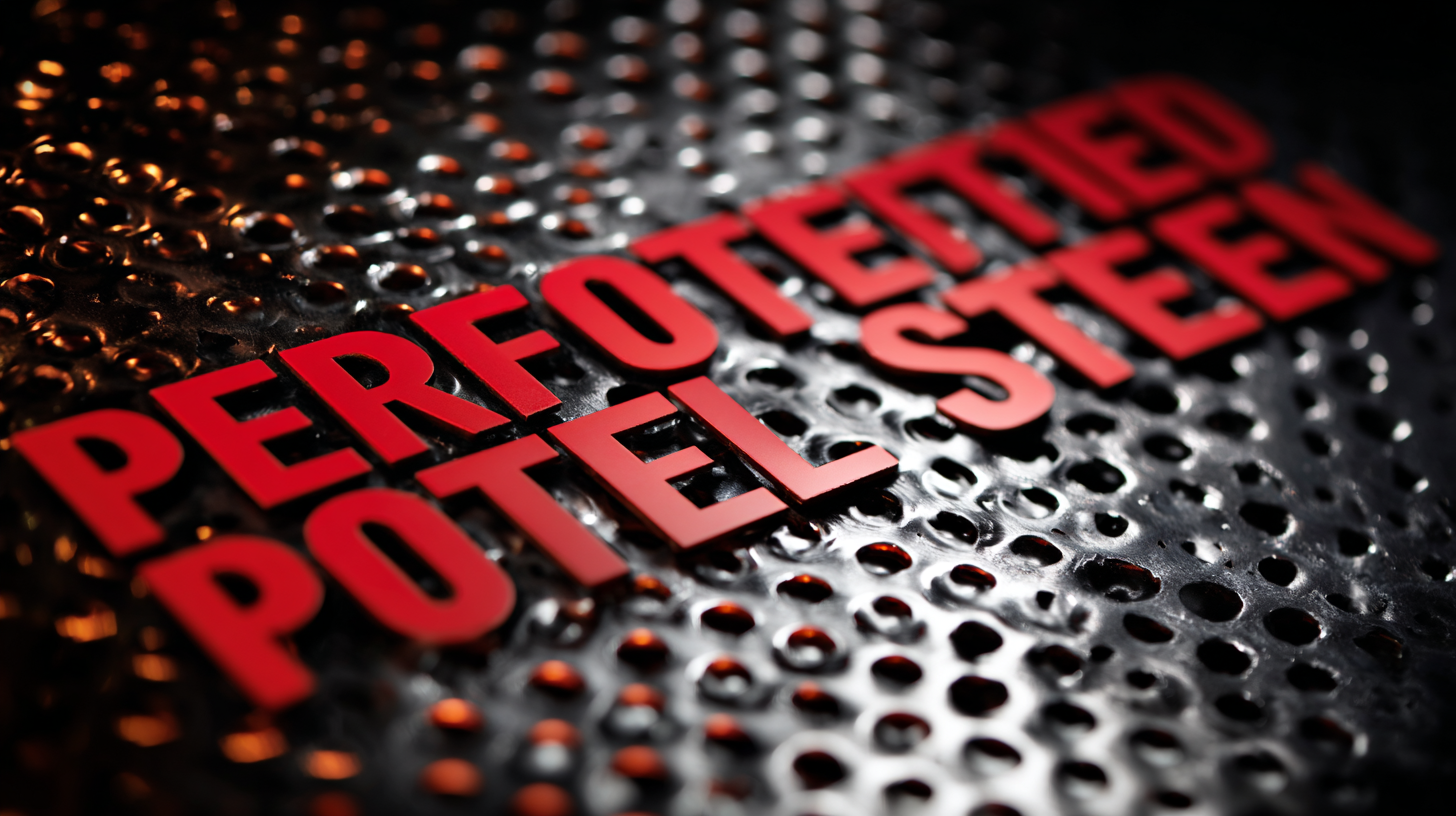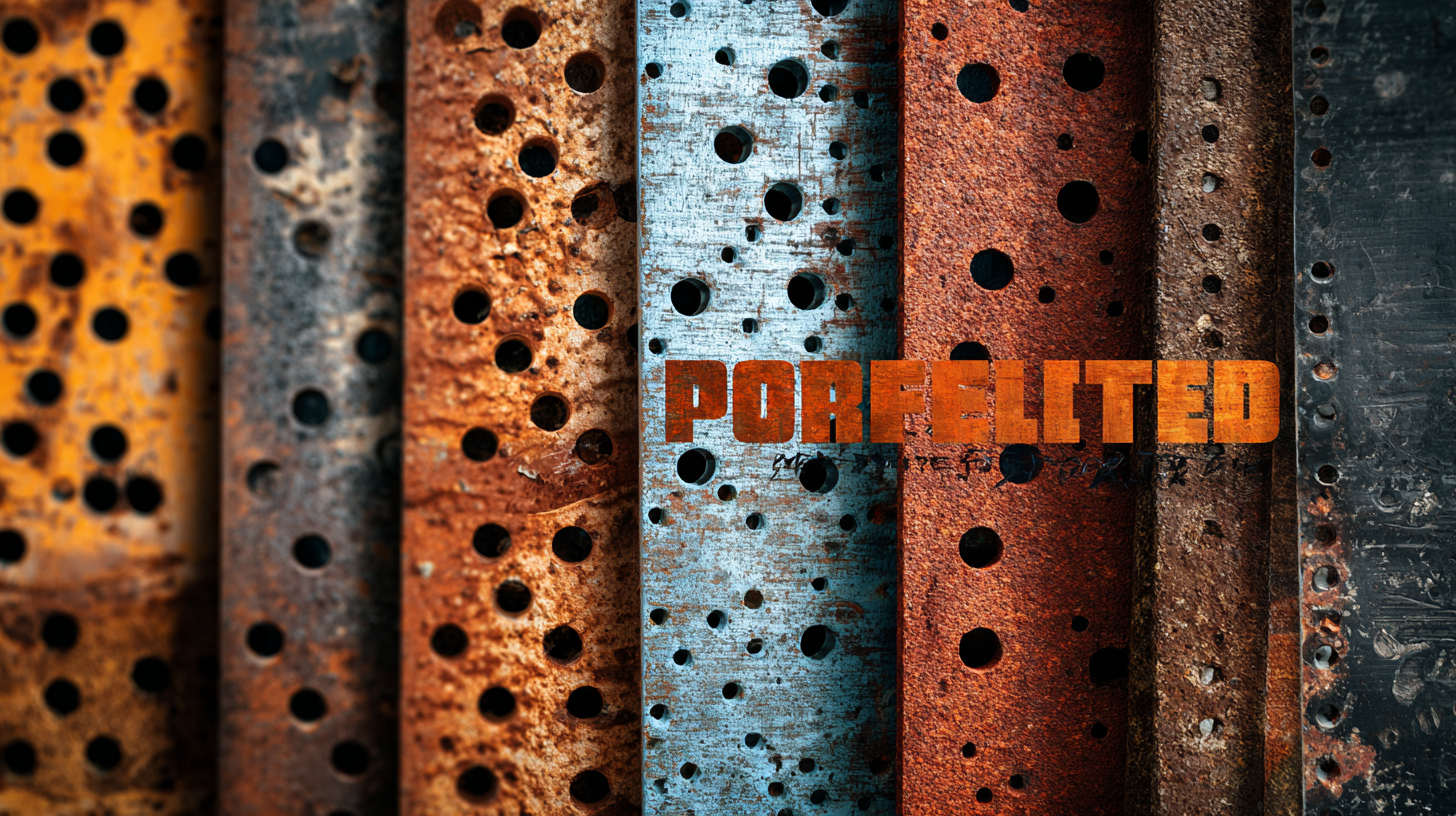In the realm of modern manufacturing, the significance of **Perforated Steel Sheet** cannot be overstated, as it serves a multitude of functional and aesthetic purposes across various industries. According to a recent market analysis report by Research and Markets, the global perforated metal market is projected to reach $7.78 billion by 2026, growing at a CAGR of 4.5% from 2021. This substantial growth underscores the increasing demand for perforated materials in sectors such as construction, automotive, and HVAC, where they are valued for their lightweight structure, durability, and versatility. Notably, China's top-quality factories are at the forefront of fulfilling this demand, producing exceptional perforated steel products that cater to global needs. By delving into the unique features and diverse applications of perforated steel sheets and their alternatives, we can better understand their pivotal role in advancing industrial efficiency and design sophistication.

Perforated steel sheets are increasingly recognized for their unique characteristics and versatile applications across various industries. These sheets are designed with a series of holes that not only contribute to their lightweight nature but also enhance functionality, allowing for better air, light, and sound passage. The key benefits of perforated steel sheets include improved aesthetics, structural integrity, and customization options for specific projects. These properties make them ideal for applications ranging from architectural facades to industrial filtration systems.
When considering perforated steel sheets, it’s essential to assess factors like hole size, pattern, and thickness, as these elements directly influence the sheet's performance. **Tip:** Choose a perforation pattern that aligns with your project requirements; for instance, a tighter pattern may offer more support for decorative applications, while a more widely spaced design can enhance ventilation.
As the construction industry embraces new technologies, such as lightweight composite structures, the demand for innovative materials like perforated steel continues to grow. **Tip:** Explore alternatives to traditional materials, as advancements in composite manufacturing can lead to stronger, lighter solutions that may complement or replace perforated steel in specific applications.
| Feature | Perforated Steel Sheet | Aluminium Perforated Sheet | Plastic Perforated Sheet |
|---|---|---|---|
| Weight | Heavy | Lightweight | Very lightweight |
| Corrosion Resistance | Moderate (needs coating) | High | Varies (depends on type) |
| Applications | Construction, Filtration | Architectural, Decorative | Light-duty applications |
| Customization | High (variety of patterns) | Moderate | High (various colors) |
| Cost | Moderate | Higher than steel | Lower cost |
When deciding between perforated steel and its alternatives, it’s essential to consider the material's application and sustainability. Perforated steel sheets are known for their durability and versatility in various construction projects, often used in decorative facades, screens, and flooring. However, with the increasing emphasis on sustainable building practices, alternatives, such as perforated aluminum or composite materials, are gaining traction. These alternatives often have lower carbon footprints and can be sourced from recycled materials, aligning with the growing movement towards a circular economy in construction.
Tip: When selecting materials for your project, conduct a Life Cycle Assessment (LCA) to understand the environmental impact of each option. This assessment can guide you in making informed choices that balance durability with sustainability.
Another notable alternative is eco-friendly composites, which offer similar performance to perforated steel while being lighter and more resistant to corrosion. This option is particularly appealing for projects aiming to reduce energy costs through improved insulation properties.
Tip: Always consider the specific requirements of your application—such as weight, load-bearing capacity, and aesthetic preferences—when choosing between perforated steel and its competitors. The right choice can enhance both the functionality and sustainability of your project.
When selecting quality suppliers for perforated steel sheets, several criteria come into play that can enhance your purchasing experience. Firstly, evaluate the supplier's reputation in the industry. Look for testimonials and reviews from previous customers to gain insights into the quality of their products and customer service. A reputable supplier often guarantees the consistency and durability of their materials, making it essential for both short-term projects and long-term applications.

Another critical factor is the range of customization options available. Quality suppliers should offer a variety of hole sizes, patterns, and sheet thicknesses to accommodate diverse applications, from architectural designs to industrial uses. This allows buyers to choose precisely the right perforated steel sheets that meet their specific needs.
Tip: When reaching out to potential suppliers, inquire about their delivery capabilities and lead times. Quick turnaround can be crucial for project timelines.
Finally, assess the supplier's adherence to industry standards and certifications. Suppliers that comply with recognized quality standards ensure that their products meet safety regulations and performance expectations.
Tip: Always request samples before placing a large order; this allows you to verify the quality firsthand before committing.
Perforated steel sheets have carved a niche for themselves across various industries, owing to their unique combination of strength, versatility, and aesthetic appeal. In the construction sector, for example, they are frequently used for facades, sound barriers, and ventilation solutions. According to a report by MarketsandMarkets, the global perforated metal market is expected to reach USD 4.36 billion by 2026, driven by increased demand for energy-efficient materials and sustainable building practices. The ability of perforated steel sheets to allow air and light while maintaining structural integrity makes them ideal for modern architectural designs.
In the automotive and aerospace industries, perforated steel sheets serve critical functions in lightweight construction, noise reduction, and heat management. As per a survey by the International Journal of Advanced Manufacturing Technology, the automotive industry alone is projected to incorporate a higher percentage of metal perforation techniques by 2025, with applications ranging from chassis components to interior design elements. Moreover, in the food processing industry, perforated steel sheets are extensively used for filtration and drainage systems, reflecting their importance in enhancing sanitation and efficiency. This versatility across sectors highlights the significant role that perforated steel sheets play in driving innovation and efficiency in industrial applications.

When considering the procurement of perforated steel sheets or their alternatives, evaluating supplier reliability and product quality becomes paramount. A reliable supplier not only provides materials that meet industry standards but also ensures consistency in delivery schedules and customer service. Start by researching the supplier’s history in the market. Look for testimonials and case studies that highlight their operational integrity and quality assurance processes. Engaging in direct communication can also foster trust; a responsive supplier often reflects a commitment to customer satisfaction.
In addition to assessing supplier reliability, it is essential to gauge the quality of the perforated steel products offered. Request samples or visit production facilities to examine the manufacturing processes firsthand. Understanding the materials used, such as the type of steel and coatings, is crucial for ensuring that the product meets your specific needs. Certifications like ISO or ASTM can indicate a commitment to maintaining quality standards. By prioritizing these aspects, you can make informed decisions that align with your project requirements and contribute to long-term success.
